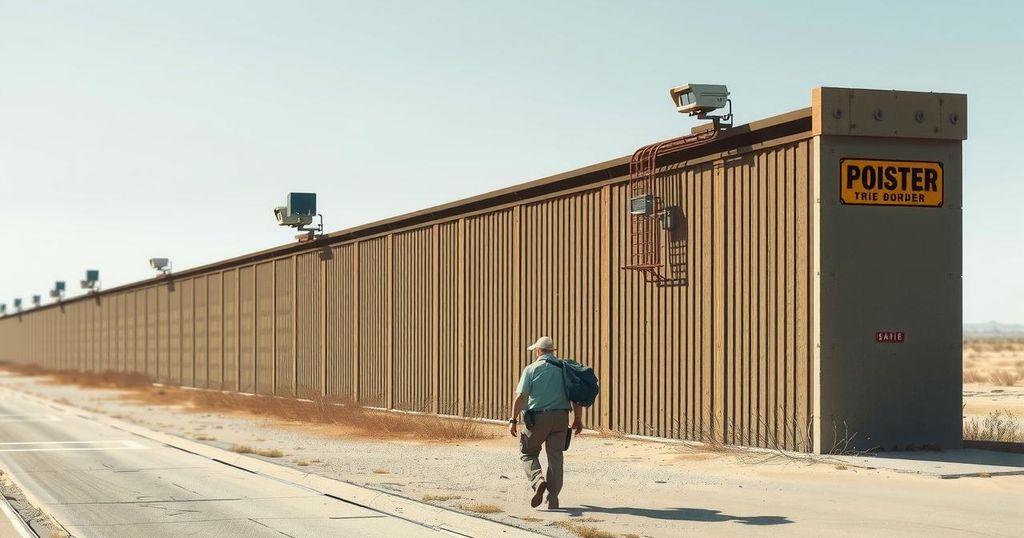Trump’s Big Bill Could Revolutionise U.S. Immigration System
The latest immigration bill from President Trump is stirring up debate and controversy. Aiming to reshape the U.S. system, its potential impacts on enforcement and immigrant costs can’t be ignored.
Huge budget aims to reshape immigration system for America
Trump’s new immigration bill, a sweeping move by the administration, is set to reshape U.S. immigration with an imposing budget. This plan, involving around $150 billion, focuses on border security and mass deportation, aiming to fund everything from extending the southern border wall to increasing detention facilities, and adds more law enforcement personnel. As Democrats voice their concerns, the debate surrounding the bill intensifies in Congress, raising eyebrows and fears.
Transforming Law Enforcement and Detention Network
According to the Congressional Budget Office, the current budget for Immigration and Customs Enforcement stands at a modest $10 billion a year. Should the bill push through Congress, this funding surge would transform the country’s immigration landscape. This includes amplifying law enforcement measures, structuring a far-reaching detention network, while simultaneously ballooning the costs associated with legal immigration.
Political Pressure Mounts for Swift Passage
The Senate is now deliberating its own version of the bill which resembles the House’s stance, rallying Republicans to advocate swift approval by focusing on recent violent protests against Trump’s policies. In the wake of unrest in Los Angeles, House Speaker Mike Johnson issued a clarion call for immediate passage, framing the bill as vital for the nation’s safety. “The lawlessness happening in LA is ANOTHER reason why we need to pass the One Big Beautiful Bill IMMEDIATELY,” Johnson proclaimed on social media.
Concerns Over Vagueness of Funding Allocations
However, it’s noteworthy that the proposed legislation remains somewhat ambiguous. Adam Isacson, a researcher from WOLA, points out that many of the bill’s sections lack clarity, with some funding requiring only scant explanation. This vagueness makes it challenging to determine how effectively the promised funds will be allocated, raising questions about the bill’s actual impact on immigration policies.
Ambitious Wall Funding and Its Implications
One of the most talked-about aspects of the bill is the ambitious allocation of $46.5 billion intended for what officials describe as an ‘integrated border barrier system.’ Encompassing fencing, access roads, and advanced technology like movement sensors, this funding aims to complete substantial portions of border barriers. Despite the bill’s promises, there’s skepticism about the wall’s effectiveness in stemming illegal crossings, a matter that remains hotly debated among experts.
Expansion of Detention Facilities on the Horizon
Moreover, a hefty chunk of $45 billion is earmarked to expand immigrant detention facilities. With these funds, the bill aims to increase ICE’s detention capacity significantly, striving for a deportation system that can operate at high efficiency. Yet, while such expansions could streamline deportations, it remains to be seen if even this level of funding will be adequate for Trump’s lofty goals, especially given the current figures on daily arrests, which have stagnated in recent years.
Immigration Court Enhancements and New Challenges
The bill also proposes drastic changes to the immigration court system, allocating $1.25 billion to hire more judges and expand courtroom capacities. Currently overwhelmed, the immigration courts are mired in backlog issues, marking a substantial increase in difficulty for those navigating the system. The additional funding could serve as a lifeline; however, it may also reflect an intent to sidestep the legal processes altogether given rising courthouse arrests, stirring anxiety among immigrants awaiting hearings.
Major Fee Increases Affecting Aspiring Immigrants
Lastly, the plan revamps immigration fees dramatically, introducing new costs for services that once came at no charge. Asylum applications could soon demand $1,000, aside from additional fees for employment applications, with significant jumps in appeals costs as well. While the wealthier may brush these changes off, for a substantial number of potential immigrants, these financial pressures could force them to reconsider their aspirations of coming to America.
In summary, President Trump’s immigration bill seeks to radically reshape the country’s immigration strategy with substantial funding aimed at enhancing enforcement, increasing detention capabilities, and modifying existing court structures. However, the obscured specifics and potential burdens on vulnerable immigrants raise notable concerns. With the Senate now engaged in discussions, the future moves of this legislation will be closely scrutinised by both supporters and detractors alike, as the overarching impact remains to be seen.




